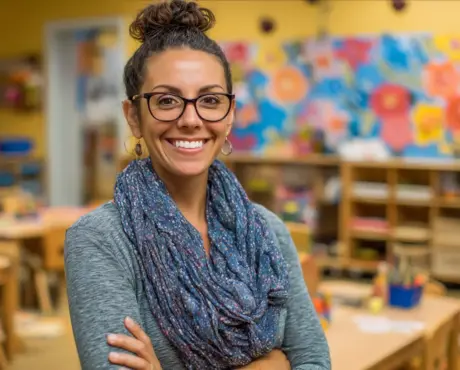
In today’s diverse classrooms, where students come from various backgrounds, possess different abilities, and have unique learning styles, one-size-fits-all teaching approaches are no longer effective. Educators must adapt their teaching methods to cater to the individual needs and abilities of their students. Differentiated learning is a pedagogical approach that recognises and celebrates this diversity, ensuring that every student has the opportunity to succeed. In this blog post, we will explore how differentiated learning can be implemented in the classroom and discuss strategies for adapting teaching methods to meet the diverse needs and abilities of young learners.
Understanding Differentiated Learning
Differentiated learning, often referred to as differentiated instruction, is an approach that recognises that students learn differently and at their own pace. It involves tailoring teaching methods, content, and assessments to accommodate the varying needs and abilities of students within a single classroom. The goal of differentiated learning is to provide every student with a challenging and engaging educational experience that allows them to reach their full potential.
Implementing Differentiated Learning in the Classroom
Assessment of Student Abilities: Before implementing differentiated learning, it’s essential to assess the abilities and learning styles of your students. This can be done through observations, pre-assessments, and discussions with students. Understanding where each student stands academically and emotionally will help you tailor your teaching methods effectively.
Flexible Grouping: In a differentiated classroom, students are often grouped flexibly based on their needs and abilities. This can involve both homogeneous and heterogeneous grouping. For example, you might group students with similar reading levels together for a reading activity while mixing up groups for a collaborative project to foster peer learning.
Varied Content and Resources: Instead of using a single textbook or resource, offer a variety of materials that cater to different learning preferences. This could include textbooks, online resources, videos, hands-on activities, and more. Providing choices empowers students to take ownership of their learning.
Adjusting the Pace: Recognise that students learn at different rates. Some may need more time to grasp concepts, while others may quickly move ahead. Be flexible in your pacing and allow for extra support or enrichment as needed.
Scaffolded Instruction: Scaffolding involves breaking down complex tasks into smaller, more manageable steps. Provide students with the support they need to progress through these steps, gradually removing support as they become more proficient.
Varied Assessments: Offer a variety of assessment methods to allow students to demonstrate their understanding in ways that suit their strengths. This might include traditional tests, projects, presentations, or even peer assessments.
Individualised Learning Plans: For students with special needs or advanced abilities, consider developing Individualised Education Plans (IEPs) or Individualised Learning Plans (ILPs). These plans outline specific goals, accommodations, and strategies tailored to the student’s unique needs.
Adapting Teaching Methods for Diverse Young Learners
Now, let’s delve deeper into specific strategies for adapting teaching methods to meet the diverse needs and abilities of young learners.
Visual Aids and Materials: Visual aids such as charts, diagrams, and images can help visual learners understand and retain information better. Incorporating visual materials into your lessons can make complex concepts more accessible.
Hands-On Learning: Kinesthetic learners thrive through hands-on activities. Incorporate experiments, role-playing, and interactive games to engage these students and help them grasp abstract concepts.
Auditory Supports: Auditory learners benefit from hearing information. Use discussions, audiobooks, and lectures as part of your teaching methods. Encourage students to read aloud or explain concepts verbally to reinforce their understanding.
Flexible Seating Arrangements: Create a classroom environment that accommodates different learning styles. Offer flexible seating options like standing desks, bean bags, or quiet corners for reading. Some students may focus better when allowed to move around.
Peer Learning: Encourage collaborative learning where students work together in groups. This allows for peer tutoring and fosters a sense of community. Students can explain concepts to each other, reinforcing their own understanding in the process.
Personalised Feedback: Provide individualised feedback to each student based on their specific needs and progress. This helps students understand their strengths and areas for improvement and motivates them to continue learning.
Technology Integration: Utilise educational technology to differentiate instruction. Adaptive learning platforms can assess each student’s performance and adjust the difficulty level accordingly. This ensures that students receive content that matches their current abilities.
Regular Check-Ins: Schedule one-on-one or small group check-ins with students to assess their understanding and address any concerns. This personal connection allows you to tailor your support to their unique needs.
Culturally Responsive Teaching: Recognise and respect the cultural backgrounds of your students. Incorporate diverse perspectives and materials into your lessons to make them more inclusive and relatable to all learners.
Professional Development: Continuously seek professional development opportunities to enhance your teaching skills and knowledge of differentiated instruction. Stay up-to-date with research and best practices in the field of education.
Differentiated learning is not a one-size-fits-all solution but a mindset and approach that values the unique abilities and needs of each student. By implementing flexible teaching methods, accommodating various learning styles, and offering personalised support, educators can create inclusive classrooms where every young learner has the opportunity to succeed. Embracing differentiated learning is not only a pedagogical choice but also a commitment to equity and the realisation of each student’s full potential.
Communication is key!
We’d love to hear from you!!
Related posts

- August 21, 2025
- 3:49 am
Exploring the Vibrant World of Early Childhood Education and Care

- October 18, 2023
- 11:46 am
Importance of Preschool Management Systems in Early Childhood Education Introduction

- October 4, 2023
- 3:34 am
